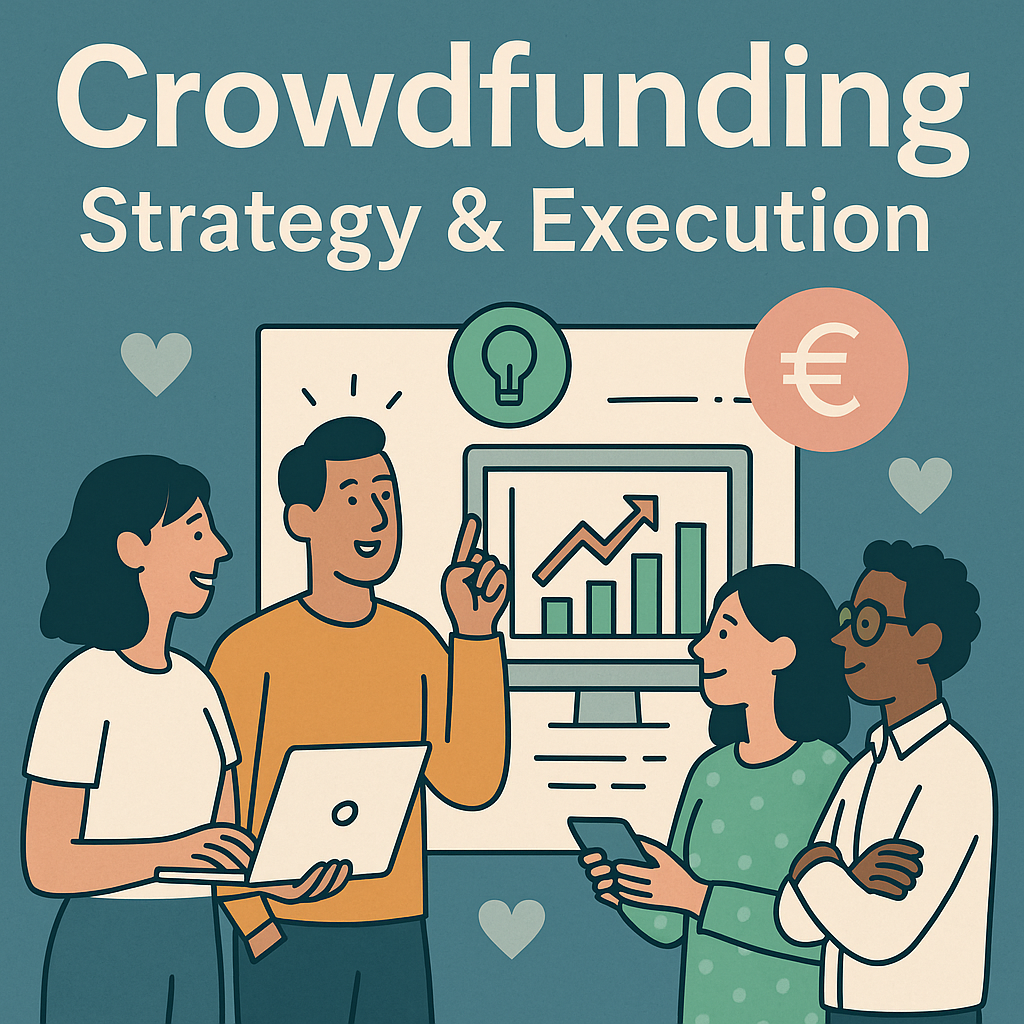

Crowdfunding
For nonprofits, running a major crowdfunding campaign (i.e over £100k) is a huge feat that needs careful planning to be a success.
You will need processes in place to ensure that you have a well-coordinated team, the correct tools, clear campaign messaging and relationships with key influencers. In this post I’ll give an overview of the key things you need to consider.
Below is an excerpt from our free 35-page guide that you can view here.
The full guide includes advice on choosing a platform, campaign messaging, goal estimates & modelling, campaign teams, networks, influencer communications, public communications, launch & timing, messaging, stewardship, data and tools.
You’re going to need an organised team ready and able to work together, and a process in place to coordinate their interactions.
Goals:
Recommendations:
I recommend that for a minimum of three months before and one month (ideally three months) after the campaign, there is a full-time campaign manager dedicated to it. I also advise getting strategic input from an expert for a minimum of six to eight days a month during preparation, as well as five days of full-time training prior to the campaign planning kick-off.
Team interactions for a campaign such as this are best run with:
Next steps:
Successful major campaigns have a clear, consistent message across all communication channels, at all points of contact for potential donors. This requires careful planning. You should focus on the following questions: What will the campaign deliver, if successful? And why should donors give?
Goal: Have one clear message for the campaign.
Recommendations:
Campaign messaging needs to be positive, clear and consistent. This quality of messaging is rarely arrived at by individuals working independently. I recommend a campaign workshop taking the following form:
Once you have decided on key campaign messages, you need to create a simple pack of supporter materials, including:
This material needs to be published somewhere easily accessible to all relevant parties throughout the campaign.

The #forEVERYgirl campaign is an excellent example of consistent messaging across all communications.
Next steps:
There are plenty of tools available on the web (many of which we use at Hubbub!) which can help you to coordinate your team’s activities.
Goals:
Ensure the project team can:
Recommendations:
My recommendation is to use web and mobile tools where possible, to minimise software installation and maintenance.
The tools I advise for good team coordination of a digital campaign are as follows:

A screenshot of Slack

A screenshot of Trello
It is vital to undertake a proper analysis of your network in order to ensure that your campaign funding goal and/or stretch goals are realistic.
Goals:
Recommendations:
Normally, a goal is set with a combination of top-down and bottom-up approaches. A top-down approach asks: what funds are required for a specific project? A bottom-up approach asks: how much could we potentially raise from all the people in our network?
If, say, you need $250k for your project, you’ll then need to analyse your network to see whether this is feasible and adjust your goal if not. I recommend using bottom-up modelling tools (i.e social media influencer tools) using estimated network sizes to get a range of scenarios for fundraising, and highlight the key challenges to achieving this scale. I also suggest creating an aspirational set of targets based on top-down approaches. For example:
If we raise $250k: we will run the opening exhibition.
If we raise $500k: we will open a new wing of the building.
Seeing the alignment and overlap between the top-down and bottom-up approaches will inform the choice of appropriate minimums and goals for the project.
Next steps:
Goals:
Identify who the influencers are, how to reach them, what you want them to do, and what the next actions are for this engagement.
Recommendations:
I suggest identifying key members of the team who are most likely to interface with potential influencers across different categories e.g. press, celebrity, communities, etc. Get these staff into a meeting room, and run through each potential target identified in the network mapping exercise, with a view to answering the key questions stated under goals.
For each potential influencer, you should be able to identify a next action and assign this to a person, along with a date for this to be done by. The campaign manager is responsible for collating the outcomes of these engagements, and defining next actions after the initial interaction. If a clear next action cannot be identified, the potential influencer should be removed from the list, as it is unlikely any useful progress can be made with them.
I suggest you invite your external expert into the influencer mapping meeting.
Next steps:
I hope you found the above useful as a starting point for planning a major campaign.
This is an excerpt from a more detailed guide I have written that you can read here.
This includes advice on choosing a platform, campaign messaging, goal estimates & modelling, campaign teams, networks, influencer communications, public communications, launch & timing, messaging, stewardship, data and tools.

By clicking “Accept”, you agree to the storing of cookies on your device to enhance site navigation, analyze site usage, and assist in our marketing efforts. View our Privacy Policy for more information.


